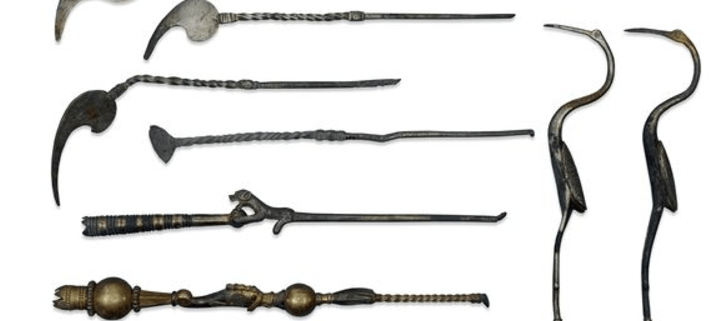Pickin’ and Grinnin’
Smile Sarasota constantly reminds you to make sure you clean between your teeth and there are plenty of people who would much rather use a toothpick than dental floss! And guess what? The toothpick has been around longer than mankind. The skulls of Neanderthals, as well as Homo sapiens, have shown clear signs of having teeth that were picked with a tool, according to anthropologists. Since ancient times, men of note have used toothpicks. For centuries, the upper classes used elegant toothpicks often made of gold, silver or ivory and inlaid with precious stones. The tool became so popular that a body of etiquette grew up around its use. The permanent crafted toothpick also became a notable dowry item.
And did you know that toothpicks predate the toothbrush? The Roman Emperor Nero was known to appear at banquets with a silver toothpick between his lips and he evidently believed in oral hygiene. In Europe, toothbrushes made from boar- or horse-hair had been introduced from China, but toothpicks remained the tool of choice until brushing became more common in the 19th century. Ordinary people used sharpened sticks or goose quills, whilst the more well-to-do used luxury toothpicks stylized in precious metals or set with gems. In Shakespeare’s play Much Ado About Nothing, the main character, Benedick, offers to find Don Pedro “a tooth-picker from the furthest inch of Asia.”
In those early periods of our history, various types of soft and hard wood were used as a tool for oral hygiene, soft grass to floss and chewing of sticks until one end of it became soft and perfect for brushing teeth. These kind of chewed sticks were found many times in the areas where our prehistoric ancestors lived. As for the toothpicks, they were created from any number of available materials – wood, bone, ivory, shells, bird claws, walrus whiskers and many others. The arrival of metal age brought a revolution in toothpick use and creation. Even the earliest age of bronze metalwork in Northern Italy and East Alps produced small and slim bronze toothpicks. This tradition of metal toothpicks continued through the ages, and high profile citizens of Roman Empire liked to use pieces made from silver and bronze. Famous Roman Emperor Nero was famous for his public use of silver toothpicks on some festive occasions. After the fall of Roman Empire, other nations continued to refine and create toothpicks from many materials that they found around them. Norse Vikings used wooden toothpicks, others used frontal teeth of lizard attached to small sticks, and some countries like Japan produced very strict rules and rituals regarding the use of toothpicks.
Fashion of 17th century Europe nobility brought the rise of very extravagant gem encrusted metal toothpicks, accompanied with simpler and more easily manufactured porcupine quills and simple wooden sticks. The largest toothpick manufactory in the United States was founded by Charles Forster of Boston, who created a market for disposable toothpicks by having Harvard students eat at local restaurants, then loudly demand a toothpick after finishing their meals. The factory he founded, Forsters, Inc., manufactured toothpicks in Strong, Maine, where Forster found the kind of wood he deemed best for toothpick making. There, it took about ten people and a lot of computer-driven machinery to put out an average of 20 million toothpicks daily. The factory closed in 2003.
People have found far more elaborate uses for toothpicks than picking the teeth, however. A man named Joe King used 110,000 toothpicks to build a 23-foot-high likeness of the Eiffel Tower. Wayne Kusy of Evanston, Illinois, used 193,000 toothpicks to create a 16-foot-long replica of the British luxury liner Lusitania. Every year hundreds of billion toothpicks are used by the people around the world, most notably around 200 billion annually just in China, where use of toothpicks represent important after-meal ritual.
While Dr. Still prefers dental floss to toothpicks, history has shown us that toothpicks have been a part of human culture far longer and used more diligently!
Sources and Credits: Eatingutensils.net, The Smithsonian Museum, Pit Rivers Museum, Arizona State University, Bennion, E 1986 Antique Dental Instruments, London: Sotheby’s Publ.; Foley, GPH 1972 Foley’s Footnotes: A Treasury of Dentistry, Wallingford, PA: Washington Square East Publ; Petroski, H 2007 The Toothpick: Technology and Culture, New York, NY: Random House.




